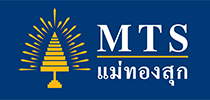



The yuan CNY=CFXS had opened at a near one-week high against the U.S. dollar, supported as well by a firmer official yuan midpoint setting by the central bank.
The dollar was firmly capped while the Chinese yuan advanced on Thursday after news that Washington was seeking a new round of trade talks with Beijing reduced safe-haven demand for the U.S. currency.
The dollar index against a basket of six major currencies was little changed at 94.795 .DXY after declining about 0.5 percent the previous day.
China's yuan CNY=CFXS rose 0.3 percent to 6.8450 per dollar in onshore trade on Wednesday on the renewed hopes for U.S.-China trade discussions, pulling back from a 2-1/2-week low of6.8800 brushed the previous day.
• The European Central Bank is all but certain to keep policy unaltered on Thursday, making only nuanced changes to its guidance to stay on course to end bond purchases this year and raise interest rates next autumn.
.png)
• EUR/USD Technical Analysis: Breakout seen on 4H chart could embolden the bulls
The descending channel breakout seen in the EUR/USD 4-hour chart indicates a revival of the rally from the August 15 low of 1.1301 and could yield a stronger rally toward the recent high of1.1733.
The renewed hopes of US-China trade talks could keep the risky assets and that could only add to the bullish tone around the common currency
• Canadian Foreign Minister Chrystia Freeland on Wednesday said officials needed to do more work before she could hold fresh talks with the United States on renewing NAFTA as time runs out to reach a deal.
“We decided that in order to have another productive conversation, it would be best to give our officials some time to hold technical discussions,” she told reporters late in the day, but gave no details.
A well-placed source had earlier told Reuters that Freeland planned to return to Washington for more talks on Thursday with U.S. Trade Representative Robert Lighthizer, adding that plenty of work remained.
• Venezuelan President Nicolas Maduro is traveling to China to discuss economic agreements, as the crisis-struck OPEC nation seeks to convince its key Asian financier to disburse fresh loans.
Venezuela’s Information Ministry did not respond to a request for comment.
• Japan’s core machinery orders robustly exceeded expectations in July, rebounding from the previous month’s decline and firming up the view that capital expenditure will continue to expand and boost overall economic growth.
The 11.0 percent rise in core machinery orders, a highly volatile data series regarded as a leading indicator of capital spending, soared over the median estimate for a 5.7 percent increase seen in a Reuters poll and was the fastest increase since January 2016.
• Asian companies posted their lowest profit growth in nearly two years in the June quarter and earnings are likely to come under further pressure, weighed down by the escalating U.S.-China trade war and high currency volatility, Reuters analyses showed.
An analysis of about 4,000 Asian companies excluding Japan showed their combined net profit rose 12.98 percent in the June quarter, easing for the third straight quarter and the slowest pace of expansion the September quarter of 2016.
• American companies in China are being hurt by tariffs in the growing trade war between Washington and Beijing, according to a survey of hundreds of firms, prompting the U.S. business lobbies behind the poll to urge the Trump administration to reconsider its approach.
The negative impact of the tariffs on U.S. companies has been “clear and far reaching”, according to the joint survey by AmCham China and AmCham Shanghai published on Thursday.
• Moscow is ready to do what it can to break the impasse in relations between Russia and the United States, and is taking seriously President Donald Trump’s willingness to forge a normal dialogue, though anti-Russia sentiment in the U.S. establishment was a hindrance, Foreign Minister Sergei Lavrov said.
• The International Monetary Fund said on Thursday that Russia might benefit from further interest rate cuts if inflation stayed subdued.
A day before a central bank policy meeting, the IMF said “further monetary easing could be appropriate if headline inflation remains below the 4 percent target and underlying inflationary pressures stay low.”
• Despite fears of disruptions to global oil supplies and curbs on production, major oil producing group OPEC sees global oil supplies as fine – it's demand that should be worrying people.
The 15-member OPEC said Wednesday in its latest monthly report that preliminary data suggested that the global oil supply increased 490,000 barrels a day to average 98.9 mb/d in August, compared with the previous month.
• Oil prices fell on Thursday, reversing some of the strong gains from the previous session, as economic concerns raised doubts about ongoing fuel demand growth.
U.S. West Texas Intermediate (WTI) crude futures CLc1 were at $69.91 per barrel at 0455 GMT, down 46 cents, or 0.7 percent, from their last settlement.
Brent crude futures LCOc1 slipped 43 cents, or 0.5 percent, to $79.33 a barrel.
